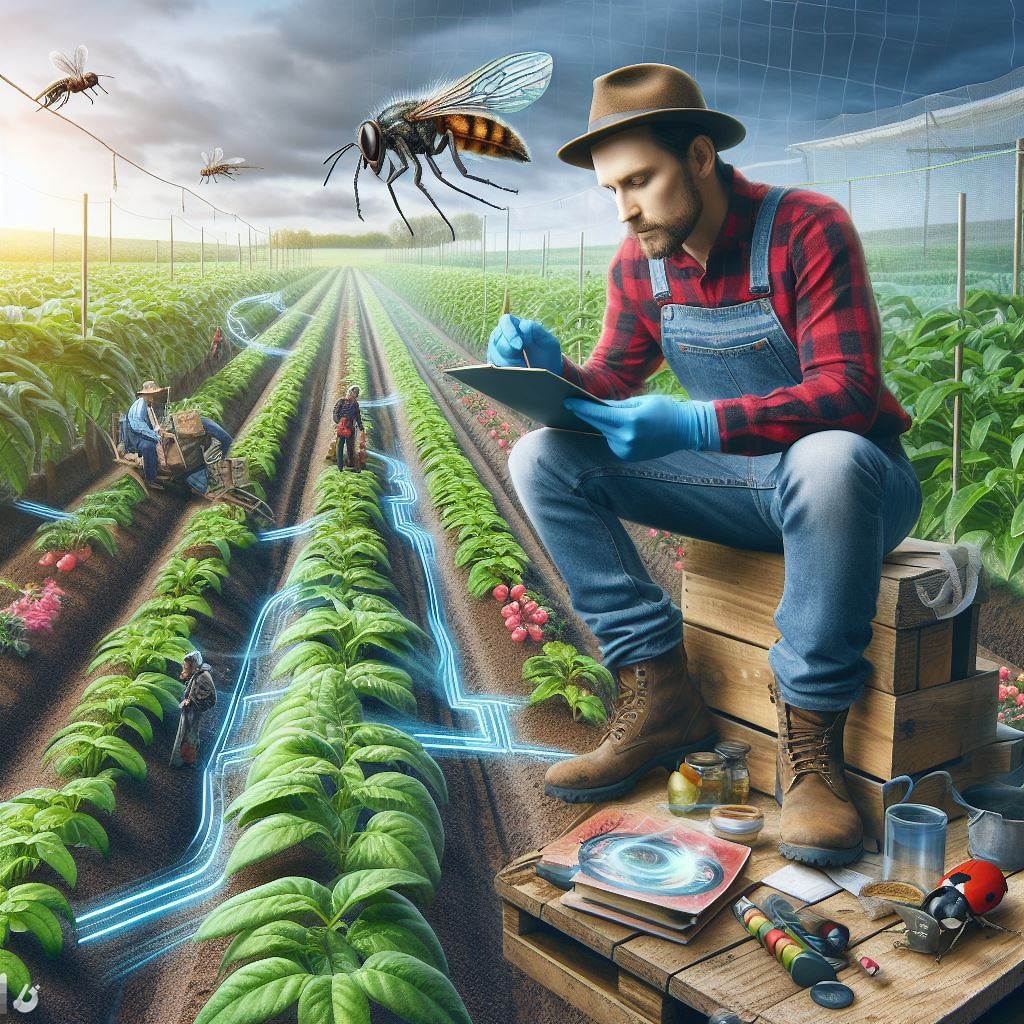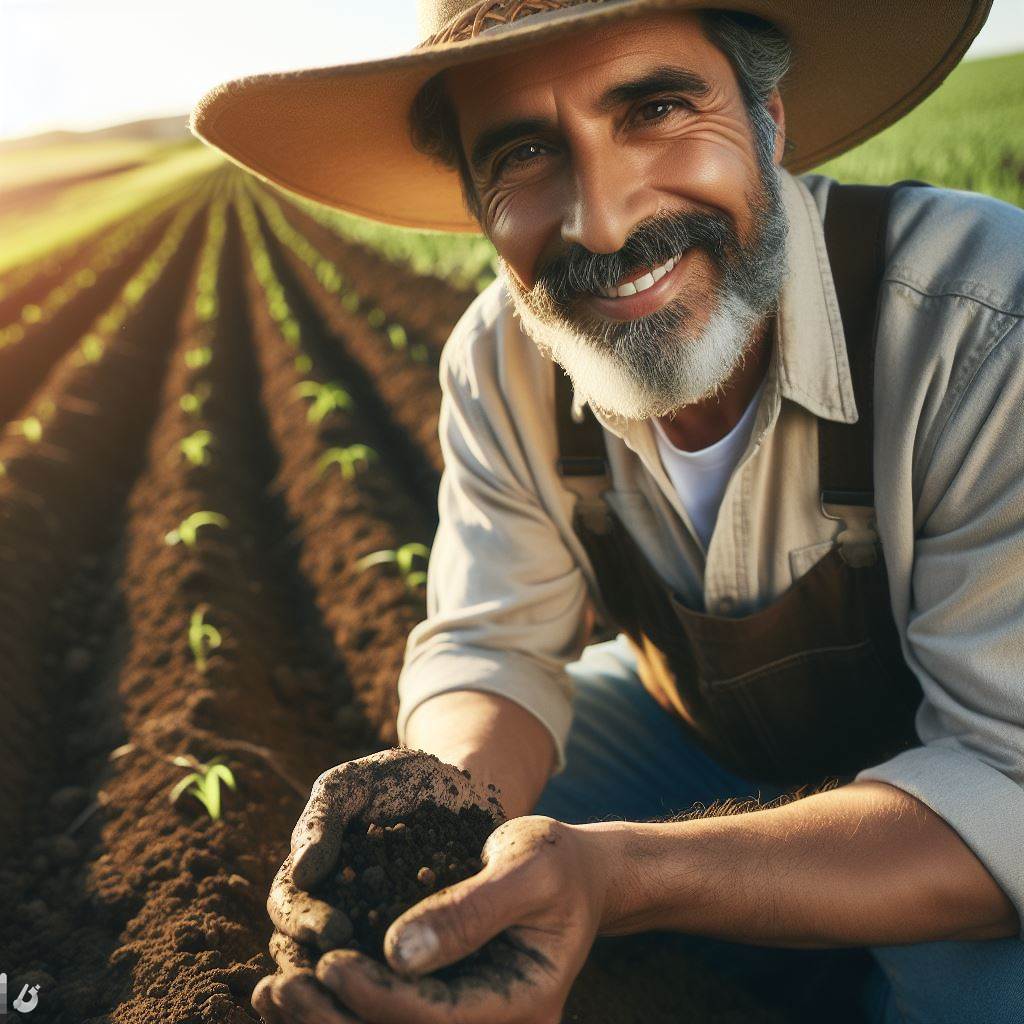Introduction
IPM, or Integrated Pest Management, is a sustainable approach to managing pests in agriculture.
It combines various pest control methods to minimize the use of pesticides and protect the environment.
In modern agriculture, IPM practices play a vital role in ensuring sustainable and productive crop production.
By utilizing multiple pest management strategies, IPM reduces the reliance on chemical pesticides.
Transitioning to discussing the role of biocontrol in IPM practices, we highlight its importance.
Biocontrol involves the use of living organisms to control pests, such as insects, pathogens, and weeds.
It is an environmentally friendly and economical approach that complements IPM strategies.
Biocontrol agents, like predators, parasitoids, and microorganisms, can regulate pest populations effectively.
These agents prey on or infect pests, interrupting their life cycles and reducing their numbers.
By integrating biocontrol into IPM practices, farmers can minimize pesticide use and prevent resistance development.
Biocontrol also promotes biodiversity, as it conserves beneficial organisms and restores ecological balance.
Furthermore, it offers long-term pest management solutions, reducing the need for repeated pesticide applications.
In short, biocontrol plays a crucial role in IPM practices by providing sustainable and effective pest control.
Its integration with other IPM strategies ensures a balanced and environmentally conscious approach to agriculture.
Understanding Biocontrol
A. Definition of biocontrol
Biocontrol is the use of living organisms to control pests and diseases in agriculture.
Transform Your Agribusiness
Unlock your farm's potential with expert advice tailored to your needs. Get actionable steps that drive real results.
Get StartedIt involves the introduction, conservation, and augmentation of natural enemies of pests.
B. Comparison with other pest management techniques
Biocontrol is distinct from chemical and mechanical pest control methods.
Chemical pest control relies on the use of pesticides, which can be harmful to the environment and human health.
Mechanical pest control involves physical methods such as traps and barriers.
Biocontrol is a sustainable approach that offers long-term pest management solutions.
C. Benefits and limitations of biocontrol in IPM practices
1. Benefits
- Reduces reliance on chemical pesticides, leading to a safer environment.
- Minimizes the development of pest resistance to pesticides.
- Supports overall ecosystem health by maintaining balanced predator-prey relationships.
- Can be cost-effective in the long run as natural enemies can reproduce and persist over time.
2. Limitations
- Effectiveness may vary depending on environmental conditions and the target pest species.
- Requires careful selection and evaluation of suitable natural enemies.
- May take time to establish and reach desired pest control levels.
In fact, biocontrol plays a significant role in Integrated Pest Management (IPM) practices.
It offers an environmentally friendly and sustainable alternative to chemical pest control.
By understanding the definition, comparing it with other techniques, and considering the benefits and limitations of biocontrol, farmers and pest management professionals can make informed decisions.
Implementing biocontrol strategies can contribute to the long-term health and productivity of agricultural systems while minimizing negative impacts on the environment and human health.
Read: Sustainable Farming: IPM Success Stories
Types of Biocontrol Agents
Biocontrol agents are essential components of Integrated Pest Management (IPM) practices.
They represent natural enemies of pests and contribute to sustainable pest management without relying on synthetic chemicals.
There are different types of biocontrol agents, including predators, parasitoids, and pathogens, each playing a distinctive role in controlling pest populations.
A. Predators
Predators are insects that actively prey on other organisms, particularly pests. Ladybugs, lacewings, and praying mantises are examples of predatory insects commonly utilized in IPM practices.
These predators feed on pests, such as aphids or caterpillars, and reduce their numbers.
By including predators in IPM programs, farmers can significantly decrease pest populations and minimize reliance on pesticides.
Predatory insects also have the advantage of being mobile, allowing them to search for and attack pests throughout the field.
B. Parasitoids
Parasitoids, on the other hand, are insects that are unique in their reproductive behavior.
They lay their eggs inside or on the pest, and the hatching larvae feed on the pest, eventually causing its death.
Parasitic wasps and flies are frequently employed as biocontrol agents in IPM. These insects interrupt pest life cycles by parasitizing pest species.
The host-specificity of parasitoids ensures that they only attack specific pests, minimizing any adverse effects on non-target organisms.
The use of parasitoids in IPM helps reduce pest abundance and prevents their further reproduction.
C. Pathogens
Apart from insects, pathogens also play a significant role in biocontrol. Fungal and bacterial pathogens can be used effectively to suppress pest populations.
Beauveria bassiana, a fungal pathogen, infects and kills various pests, including aphids, whiteflies, and mites.
Showcase Your Farming Business
Publish your professional farming services profile on our blog for a one-time fee of $200 and reach a dedicated audience of farmers and agribusiness owners.
Publish Your ProfileBacillus thuringiensis, a bacterium, produces toxins that specifically target certain groups of pests, such as caterpillars and mosquitoes.
These pathogens can be applied as biopesticides, either by directly spraying them on plants or by incorporating them into bait or traps.
Once pests come into contact with the pathogens, they become infected and die.
Pathogens are particularly valuable in IPM because they can have long-lasting effects on pest populations and can be specific to the target pest, reducing non-target risks.
In essence, biocontrol agents encompass a variety of organisms, including predators, parasitoids, and pathogens, each contributing to the effectiveness of IPM practices.
Predators prey on pests, reducing their numbers and providing natural pest control.
Parasitoids disrupt pest life cycles by parasitizing hosts, ultimately leading to pest population decline. Pathogens infect and kill pests, offering long-lasting effects on pest populations.
By incorporating biocontrol agents into IPM programs, farmers can minimize pesticide use, protect beneficial insects, and promote sustainable pest management.
Read: Organic IPM Solutions for Healthy Crops
Implementation of Biocontrol in IPM Practices
A. Integration with other pest management methods
In order to maximize the effectiveness of biocontrol, it is important to integrate it with other pest management methods.
This can include cultural, mechanical, and chemical control strategies.
Cultural control practices such as crop rotation, proper sanitation, and habitat manipulation can help create an environment that is less favorable for pests and more favorable for beneficial organisms.
Mechanical control methods like handpicking pests, trapping, or using physical barriers can be used in combination with biocontrol to reduce the pest population.
Chemical control, although not always necessary, can be used as a last resort when the pest population is too high or biocontrol alone is not providing sufficient control.
Care should be taken to select pesticides that are least harmful to beneficial organisms.
B. Considerations when introducing biocontrol agents
1. Matching the biocontrol agent with the specific pest
Selecting the right biocontrol agent is crucial for successful pest control.
The agent should have a proven track record of feeding on or parasitizing the target pest.
2. Timing and monitoring of biocontrol agent release
The release of biocontrol agents should be timed to coincide with the peak population of the target pest.
Regular monitoring is necessary to assess the effectiveness of the biocontrol and make adjustments if needed.
3. Potential risks and precautions
Before introducing a biocontrol agent, it is important to assess the potential risks associated with its use.
This includes considering the impact on non-target organisms, the potential for the biocontrol agent to become invasive, and any potential negative effects on human health or the environment.
Precautions should be taken to minimize these risks.
Implementing biocontrol in IPM practices requires careful consideration of how it can be integrated with other pest management methods.
By combining cultural, mechanical, and chemical control strategies with biocontrol, growers can achieve more sustainable and environmentally friendly pest management.
When introducing biocontrol agents, it is essential to select the right agent for the specific pest and ensure proper timing and monitoring of their release.
Potential risks and precautions should also be evaluated to minimize any negative impacts.
Overall, biocontrol plays a critical role in IPM practices, offering a long-term, sustainable solution for pest control in agriculture.
By harnessing the power of beneficial organisms, we can reduce reliance on chemical pesticides while effectively managing pest populations and preserving the health of our ecosystems.
Read: IPM Strategies: Safe for Environment

Case Studies and Success Stories
Example 1: Biocontrol agent effectively controlled aphid infestation in a greenhouse
One notable success story in the use of biocontrol in IPM practices is the effective control of aphid infestation in a greenhouse.
Using biocontrol agents such as ladybugs and lacewings, the greenhouse was able to combat the aphid population without the use of harmful pesticides.
The biocontrol agents were introduced into the greenhouse, and they efficiently predated on the aphids, reducing their numbers significantly.
This successful application of biocontrol not only eliminated the pest problem but also maintained a healthier and more sustainable environment within the greenhouse.
Example 2: Successful use of biocontrol in citrus orchards to combat citrus pest
Another remarkable case study involves the successful use of biocontrol in citrus orchards to combat citrus pests.
Rather than resorting to chemical pesticides, farmers employed biocontrol methods by releasing specific insect species that prey on citrus pests.
For instance, the parasitic wasp Aphytis melinus was introduced to control the population of scale insects that infested the citrus trees.
These biocontrol agents effectively reduced the pest population, contributing to healthier citrus trees and higher yields.
The use of biocontrol in this context demonstrated its effectiveness in managing pests while minimizing negative environmental impacts.
Other notable examples of biocontrol success in IPM practices
Apart from the aforementioned case studies, there are numerous other notable examples of biocontrol success in IPM practices.
In agricultural settings, natural enemies like predatory mites, nematodes, and parasitic wasps have been successfully utilized to combat various pests, including thrips, root knot nematodes, and caterpillars.
Showcase Your Farming Business
Publish your professional farming services profile on our blog for a one-time fee of $200 and reach a dedicated audience of farmers and agribusiness owners.
Publish Your ProfileIn forests, the introduction of biocontrol agents, like beetles, has effectively controlled outbreaks of invasive insect species or tree diseases.
Biocontrol has also been applied in urban areas to manage mosquito populations through the release of mosquito-specific fish species or bacteria.
These examples highlight the versatility and effectiveness of biocontrol in various ecosystems and pest management scenarios.
Biocontrol in IPM practices has not only proven to be successful in the control of pests but also offers several advantages.
Unlike chemical pesticides, biocontrol agents are often more specific in their target, reducing the risk of harming beneficial organisms or causing environmental damage.
Additionally, biocontrol methodologies are sustainable, as they rely on naturally occurring biological interactions rather than synthetic chemicals.
Furthermore, continuous use of chemical pesticides can lead to the development of pesticide resistance in pest populations, making biocontrol a valuable alternative strategy.
In general, case studies and success stories demonstrate the efficacy of biocontrol in IPM practices.
The examples presented showcase how biocontrol agents can effectively control pest populations, improving crop yields, and reducing damage to agricultural and natural ecosystems.
Furthermore, the advantages of biocontrol, such as specificity, sustainability, and reduced pesticide resistance, make it a valuable tool in integrated pest management strategies.
These success stories highlight the importance of considering biocontrol as a viable and effective component of pest management practices, promoting a more sustainable and environmentally friendly approach.
Read: Understanding IPM in Sustainable Farming
Future Trends and Advances in Biocontrol
A. Current research on new biocontrol agents
- Researchers are constantly exploring and studying new biocontrol agents to improve IPM practices.
- These agents may include beneficial insects, microorganisms, or natural products that can control pests.
- The aim is to find safer and more effective alternatives to chemical pesticides.
B. Exploration of genetic biocontrol approaches
- Scientists are investigating the use of genetic techniques for biocontrol.
- This involves modifying the genetic makeup of organisms to enhance their ability to control pests.
- For example, genetically modified crops can produce toxic proteins that kill specific insect pests.
- Genetic biocontrol approaches have the potential to significantly impact IPM practices and reduce reliance on chemicals.
C. Potential for biocontrol to address emerging pest problems
- Biocontrol has shown promise in addressing emerging pest problems.
- As pests evolve and develop resistance to chemical pesticides, biocontrol provides an alternative strategy.
- Biocontrol can target specific pests while minimizing the impact on beneficial organisms.
- It can also be used in combination with other IPM practices for a more integrated approach to pest management.
Overall, the future of biocontrol in IPM practices looks promising.
With ongoing research on new biocontrol agents and genetic biocontrol approaches, we can expect to see advancements.
These advancements can lead to safer and more effective methods of pest control.
Biocontrol has the potential to address emerging pest problems and reduce our reliance on chemical pesticides.
By integrating biocontrol with other IPM practices, we can achieve more sustainable and environmentally friendly pest management.
It is important to continue supporting research and promoting the use of biocontrol in IPM to ensure a healthier and more sustainable future.
Conclusion
In this blog post we discussed the importance of biocontrol in IPM practices.
Biocontrol plays a vital role in reducing pesticide usage and promoting sustainable pest management.
It offers an environmentally-friendly approach to combatting agricultural pests.
Biocontrol agents can effectively suppress pest populations without harming beneficial organisms.
Farmers should embrace biocontrol as a reliable and cost-effective solution to pest problems.
It can reduce the risks associated with pesticide use and improve overall crop health.
Integrating biocontrol with other IPM practices can lead to more sustainable and resilient farming systems.
Biocontrol holds great potential for the future of agriculture and pest management.
Ongoing research and innovation in biocontrol technology will further enhance its effectiveness.
Collaboration between scientists, farmers, and policymakers is crucial in promoting the adoption of biocontrol.
Investing in education and awareness programs can help overcome barriers to the widespread use of biocontrol.
With continued efforts, biocontrol can contribute significantly to achieving sustainable agriculture goals.




